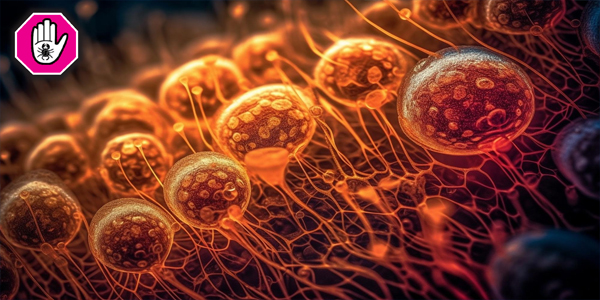Chemotherapy is a type of cancer treatment that uses powerful drugs to kill rapidly growing cancer cells in the body. It is one of the most commonly used treatments for cancer, often working in conjunction with surgery, radiation, or immunotherapy. While it can be an effective tool for combating cancer, chemotherapy also affects healthy cells that grow quickly, which can lead to side effects.
In this guide, we’ll explore what chemotherapy is, how it works, its various types, and what to expect during treatment.
How Does Chemotherapy Work? Chemotherapy works by targeting cells that divide and grow rapidly, which is a hallmark of cancer cells. While the drugs are designed to kill cancer cells, they can also affect other fast-growing cells in the body, such as those in the hair, digestive tract, and bone marrow. This is why many people undergoing chemotherapy experience side effects like hair loss, nausea, and fatigue.
Chemotherapy can be used for several purposes, including:
- Curative: To eliminate cancer entirely.
- Control: To shrink or slow the growth of tumors when curing the cancer is not possible.
- Palliative: To relieve symptoms caused by cancer, improving quality of life.
Types of Chemotherapy
There are many different chemotherapy drugs, and the specific treatment plan is tailored to the type of cancer, its stage, and the individual’s health. Chemotherapy drugs are usually classified by their mechanism of action:
- Alkylating Agents
- These drugs damage the DNA of cancer cells, preventing them from multiplying.
- Common Uses: Treating leukemia, lymphoma, and solid tumors.
- Example: Cyclophosphamide.
- Antimetabolites
- These interfere with DNA and RNA production in cancer cells.
- Common Uses: Used for breast, ovarian, and colorectal cancers.
- Example: Methotrexate.
- Anti-tumor Antibiotics
- These work by changing the DNA inside cancer cells, stopping them from growing.
- Common Uses: Often used to treat a wide range of cancers.
- Example: Doxorubicin.
- Topoisomerase Inhibitors
- These prevent cancer cells from being able to properly repair their DNA.
- Common Uses: Lung cancer, ovarian cancer, and gastrointestinal cancers.
- Example: Etoposide.
- Mitotic Inhibitors
- These prevent cancer cells from dividing.
- Common Uses: Commonly used for breast cancer, lung cancer, and leukemia.
- Example: Paclitaxel.
How Is Chemotherapy Administered?
Chemotherapy can be delivered in several ways depending on the type and location of cancer, and the overall treatment plan:
- Intravenous (IV) Chemotherapy: The drugs are delivered directly into a vein through an IV or a central line. This is the most common method of chemotherapy administration.
- Oral Chemotherapy: Chemotherapy drugs come in the form of pills or capsules that can be swallowed.
- Injection: The drugs are injected into a muscle or under the skin.
- Topical Chemotherapy: Applied to the skin, typically used for certain types of skin cancer.
- Intrathecal Chemotherapy: Delivered directly into the spinal fluid to reach cancer cells in the brain or spinal cord.
Chemotherapy treatments are usually given in cycles, which may include a treatment period followed by a rest period to allow the body to recover. A treatment cycle may last anywhere from a few weeks to months. What to Expect During Chemotherapy
Chemotherapy can be an intense experience, and each person’s response to treatment is different. Common side effects include:
- Fatigue: Chemotherapy can lower red blood cells, leading to feelings of exhaustion.
- Nausea and Vomiting: Many chemotherapy drugs cause nausea, but medications are available to help control these symptoms.
- Hair Loss: Since chemotherapy targets rapidly growing cells, it often affects hair follicles, leading to hair loss.
- Infections: Chemotherapy can weaken the immune system by reducing white blood cell counts, increasing the risk of infection.
- Mouth Sores: The lining of the mouth may be affected, leading to sores or discomfort.
- Appetite Changes: Chemotherapy can affect taste and appetite, sometimes leading to weight loss.
While side effects can be challenging, there are various medications and strategies to help manage them. Patients should work closely with their healthcare team to address side effects as they arise.
Benefits and Risks of Chemotherapy
Like all medical treatments, chemotherapy comes with both benefits and risks.
- Benefits:
- It can be highly effective in shrinking tumors or eliminating cancer.
- Chemotherapy can prevent cancer from spreading to other parts of the body.
- It can be used alongside other treatments for better results, such as before surgery to shrink tumors (neoadjuvant chemotherapy) or after surgery to kill any remaining cancer cells (adjuvant chemotherapy).
- Risks:
- Side effects can sometimes be severe and affect quality of life.
- Some people may experience long-term side effects, such as damage to organs or an increased risk of secondary cancers later in life.
- There is a possibility that the cancer may become resistant to chemotherapy drugs, reducing their effectiveness.
Conclusion
Chemotherapy is one of the most widely used cancer treatments and has been instrumental in saving and extending countless lives. It works by targeting rapidly dividing cells, making it effective in killing cancer cells. However, it also affects healthy cells, leading to side effects that can range from mild to severe.
Each person’s experience with chemotherapy is different, and the treatment plan will be tailored to the individual’s specific cancer and health needs. If chemotherapy is recommended as part of your cancer treatment, it’s essential to discuss the benefits, risks, and expected side effects with your healthcare team to feel prepared and informed. Understanding how chemotherapy works can help patients and their families navigate the treatment process with more confidence and a clearer sense of what to expect.


